Ethereum’s scalability issues have led developers to look elsewhere when developing next-gen dapps (decentralized applications). Solana is one of the most popular Ethereum alternatives for dapp development, as indicated by the immense increase of Solana ecosystem projects. But what exactly is Solana? And what are some of the best Solana projects worth exploring in 2024? To find out, join us in this guide as we explore the ins and outs of the Solana ecosystem!
Overview
We’ll kickstart today’s article by diving straight into Solana and its ecosystem. In doing so, we’ll explain what the network is, discover how it works, and explore some benefits of building dapps on the chain. From there, we’ll jump into a list of the best projects on Solana, where we will briefly cover platforms like Solend, Phantom, Orca, and many others. Lastly, once you have an overview of the Solana ecosystem, we’ll introduce you to Moralis. Moralis is the industry’s leading Web3 API provider for Solana development!
In Moralis’ Solana API suite, you’ll find prominent interfaces like the NFT API, Token API, and Balance API. These APIs deliver top-tier response times and facilitate a remarkable 83% reduction in the average time required to launch a Solana ecosystem project. So, by utilizing Moralis, you can develop Solana dapps with greater speed and efficiency.

Also, did you know you can access these tools free of charge? So, sign up with Moralis today and take your Solana projects to the next level!
What is the Solana Ecosystem?
Solana launched in 2020, and it’s a scalable layer-1 blockchain renowned for its exceptional throughput and swift transaction speeds. With these capabilities, the Solana network can tackle the scalability challenges that rival blockchains encounter. Also, with support for both smart contracts and decentralized applications (dapps), the Solana network hosts a diverse ecosystem of decentralized finance (DeFi) platforms, NFT marketplaces, and other innovative projects!

The Solana blockchain leverages a hybrid consensus mechanism that combines proof-of-stake (PoS) and proof-of-history (PoH) to maximize speed and improve scalability. With this innovative combination, Solana is able to stand out as a unique project in the Web3 space.
Another critical component of the Solana ecosystem is the network’s native cryptocurrency, SOL. The SOL token plays a crucial role in operating and maintaining the Solana ecosystem. For instance, beyond its use as a medium of exchange, SOL also functions as a governance token, giving holders a say in the network’s future developments. Additionally, SOL is used to pay for gas fees, making the token instrumental for executing transactions and interacting with the Solana network.
All in all, Solana is a unique layer-1 blockchain network hosting a vast ecosystem of decentralized exchanges (DEXs), NFT marketplaces, Web3 games, and other innovative dapps!
Benefits of Solana
The Solana blockchain has many benefits, and in this section, we’ll explore four prominent examples:
- Speed: Solana boasts block times of 400 milliseconds, making the network lighting fast. Furthermore, the blockchain can process about 3,000 transactions per second at the time of writing. This speed makes the Solana network suitable for applications relying on high throughput, such as DeFi platforms and Web3 games.
- Scalability: Solana is designed to handle thousands and thousands of transactions per second, and fees for users/developers are less than $0.0025. So, when building dapps on Solana, the network has the capabilites to facilitate the growth of your projects.
- Decentralized: The Solana blockchain is validated and kept secure by almost 2,000 independent validator nodes. This ensures that your dapps and data remain censorship-resistant and secure.
- Energy Efficient: Solana’s PoS network, along with other innovative technologies, minimizes the blockchain’s impact on the environment. Each Solana transaction takes approximately the same energy as a few searches on Google.
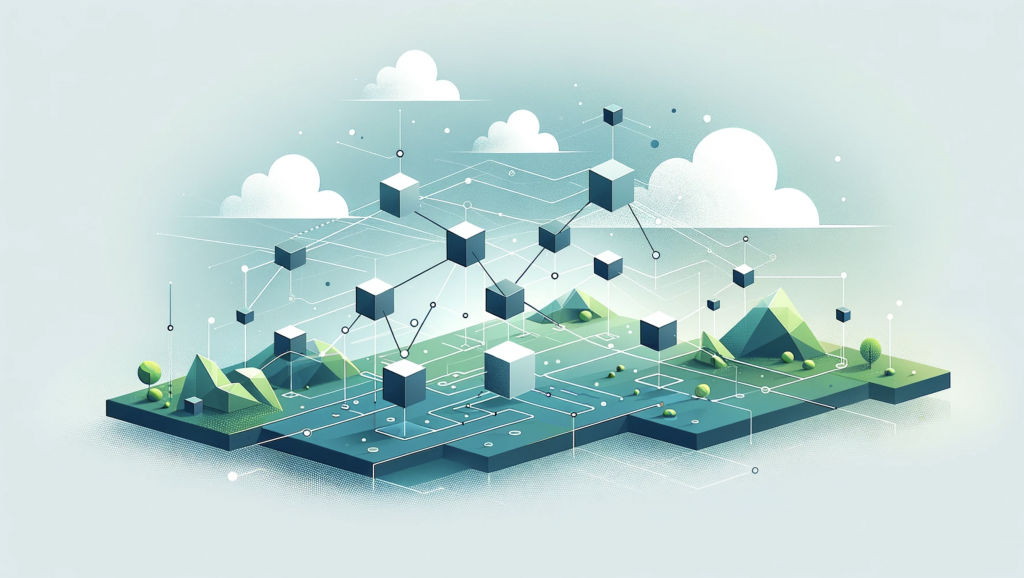
That covers the basics of the Solana blockchain. In the next section, we’ll explore the Solana ecosystem further by looking at some of the chain’s best projects!
List of the Best Solana Projects – Exploring the Solana Ecosystem
The Solana ecosystem is huge, and the network hosts a wide range of innovative projects. In this section, we’ll briefly take a look at ten of the best Solana projects:
| Best Projects on Solana | |||
| Name: | Description: | ||
| 1. Solend | Solend is a decentralized autonomous lending and borrowing protocol on the Solana network. | ||
| 2. Marinade Finance | Marinade Finance is a non-custodial liquid staking platform with over 100,000 users. | ||
| 3. Raydium | Raydium is an automated market maker (AMM) on Solana, enabling users to swap tokens, provide liquidity, and earn rewards. | ||
| 4. Saber | Saber is a prominent DEX that utilizes an AMM model to facilitate autonomous trading on Solana. | ||
| 5. Orca | Orca is an AMM-based DEX on the Solana blockchain that facilitates seamless P2P transactions. | ||
| 6. Magic Eden | Magic Eden is a leading marketplace for selling and buying NFTs. | ||
| 7. Phantom | Phantom is a non-custodial cryptocurrency wallet that allows users to store and manage their digital assets. | ||
| 8. Solflare | Solflare is a full-featured Web3 wallet, enabling users to manage their assets and access dapps on Solana. | ||
| 9. Star Atlas | Star Atlas is a space exploration role-playing game hosted on the Solana blockchain. | ||
| 10. StepN | StepN is a Web3 game on the Solana network that allows users to earn tokens in exchange for walking, jogging, or running outdoors. | ||
If you’d like to explore 400+ other projects not featured above, make sure to check out our full list of dapps on Solana on Moralis’ Web3 Wiki!
How to Build the Best Projects for the Solana Ecosystem
With an overview of the Solana ecosystem and some of the network’s best projects, you might now be inspired to build your own dapps. If this is the case, you’ll most certainly want to check out Moralis’ suite of Solana-compatible APIs!
Moralis is the industry’s #1 Web3 API provider, and our tools currently power crypto and blockchain applications for millions of end users around the world!
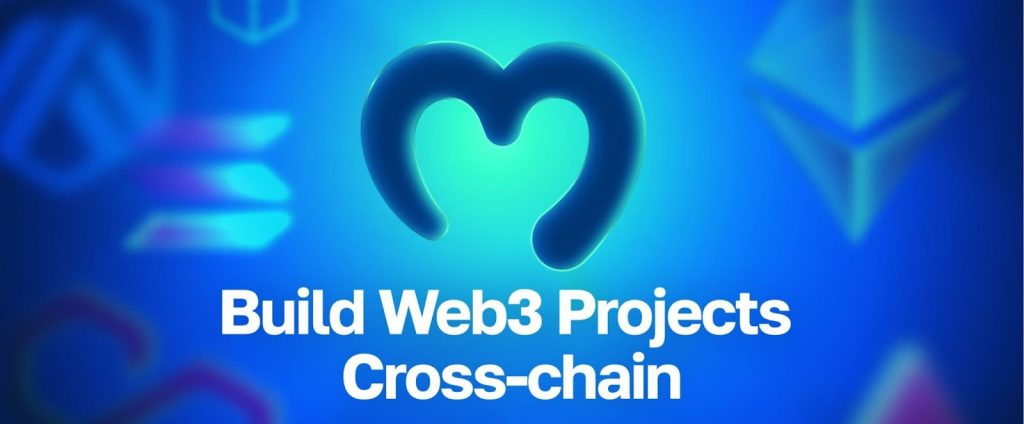
In our premier Web3 API suite, you’ll find multiple prominent interfaces for different use cases. Some examples include the NFT API, Balance API, and Token API. Consequently, it doesn’t matter if you’re building a cryptocurrency wallet, DEX, or any other platform; Moralis has got you covered.
But why does Moralis stand out as the industry’s premier API provider?
To answer this question, let’s explore three prominent benefits of our Web3 development tools:
- Comprehensive: Moralis provides its API responses with transaction decodings, address labels, metadata, and much more. In doing so, we’re able to deliver the most comprehensive APIs in the Web3 development space.
- Cross-Chain Compatibility: Our APIs are chain agnostic, featuring support for networks like Solana, BNB Smart Chain (BSC), Ethereum, etc. Consequently, when working with Moralis, you can quickly build cross-chain-compatible projects.
- Trusted: Moralis’ APIs are trusted by hundreds of thousands of developers and large industry leaders, including MetaMask, Delta, Polygon, and many others.
Let’s now dive into three examples of Solana-compatible Web3 APIs to highlight the power and accessibility of working with Moralis!
NFT API
The Moralis NFT API is free to use and provides unmatched performance via lightning-fast CDNs. What’s more, it supports more than three million NFT collections across all the most prominent blockchains. This includes everything from well-established projects to tokens minted only seconds ago.
With the NFT API, you can seamlessly fetch real-time NFT metadata, transfer data, prices, ownership data, and much more with only single lines of code! For example, let’s look at how you can get all NFTs of a wallet using the getNFTs() endpoint:
const response = await Moralis.SolApi.account.getNFTs({ "network": "mainnet", "address": "9WzDXwBbmkg8ZTbNMqUxvQRAyrZzDsGYdLVL9zYtAWWM" }); In return for calling the endpoint above, you’ll get a response containing an array of all NFTs held by the address in question. Here’s an example of what it might look like:
[ { "associatedTokenAddress": "J75PDip3hr7eXfehBrLRVTw3DKG819wTyJiehqr9dfzG", "mint": "G3hE5pg8zm1eQaDNXzoKJL89BWiwgnRSnCb9vtnsXLtw", "name": "deleted", "symbol": "PRIM" }, { "associatedTokenAddress": "5NrUeJFgGE1ErhqD6RsLRASD7ikjwsReQzDyPCHNe2Nb", "mint": "3hESRGe7asgXfvojej4ARwfyavCd1ESLX5w4qxYudEyy", "name": "Omens of Olympus #690", "symbol": "OMEN" }, //... ] Balance API
The Balance API boasts an array of powerful features, exceptional flexibility, and unparalleled scalability, making it the ultimate tool for integrating wallet data into your projects. Consequently, with the Balance API, you no longer have to wonder which tokens your users hold, as single API calls give you the native, token, and NFT balance of any Solana address!
To highlight the accessibility of this premier tool, here’s an example showing you how easy it is to get all the tokens of a Solana address using the getSPL() endpoint:
const response = await Moralis.SolApi.account.getSPL({ "network": "mainnet", "address": "EJpLyTeE8XHG9CeREeHd6pr6hNhaRnTRJx4Z5DPhEJJ6" }); Calling getSPL() will return an array of all SPL tokens held by the wallet in question. Below, you’ll find an example of what it might look like:
[ { "associatedTokenAddress": "ANG2Qh3Zn5kh1ifj4cNXbqbZT8KP7waNm3r2iVeaFwMF", "mint": "HsQ9h5Hq3h4W2ez7EHmVp4XToJYbwFFSTBKdfutHxpsk", "amountRaw": "1", "amount": "1", "decimals": "0", "name": "Cets Eyemask", "symbol": "goons" }, { "associatedTokenAddress": "21tSs3xUXzmGAgUaeJaN2AaZvaAqq92N1XbhAfem7z5R", "mint": "HqpsEeh6C3AJoDGrPJHQUUhaRSQFhoJHx1Fmf9SQZmZX", "amountRaw": "16", "amount": "16", "decimals": "0", "name": "Rауdium аlрhа рrоgrаm", "symbol": "RAP" }, //... ] Token API
Moralis’ Token API is the ultimate tool for token data, and this interface supports everything from stablecoins to meme coins. With the Token API, you can seamlessly fetch and integrate real-time token prices, along with both ownership and transfer data, into your dapps!
To show you how this tool works in practice, here’s an example of how you can fetch the price of any token using the getTokenPrice() endpoint:
const response = await Moralis.SolApi.token.getTokenPrice({ "network": "mainnet", "address": "SRMuApVNdxXokk5GT7XD5cUUgXMBCoAz2LHeuAoKWRt" }); In return for calling the endpoint above, you’ll get the price of the token in question denominated in both USD and the chain’s native currency. Here’s an example of what it might look like:
{ "usdPrice": 0.0522, "exchangeName": "Raydium", "exchangeAddress": "675kPX9MHTjS2zt1qfr1NYHuzeLXfQM9H24wFSUt1Mp8", "nativePrice": { "value": "574095", "symbol": "WSOL", "name": "Wrapped Solana", "decimals": 9 } } If you’d like to learn more about how the NFT, Balance, and Token APIs work, make sure to check out our official Solana API documentation page!
Also, If you want to explore all available interfaces, you’ll find them listed on our Web3 API page!
Moralis’ Solana API Use Cases
With an overview of Moralis’ Solana API suite to build Solana ecosystem applications, let’s look into three prominent use cases for this industry-leading tool:
- NFT Marketplaces: An NFT marketplace allows users to buy and sell NFTs seamlessly. As such, when building one, you need a way to fetch your users’ NFTs to, for instance, display which tokens they can put up for sale. This is where Moralis’ NFT API enters the equation.
- Cryptocurrency Wallets: A cryptocurrency wallet is a platform allowing users to store and manage their fungible and non-fungible tokens. Consequently, when developing a wallet, you, among other things, need to fetch the balances of your users so you can show them what tokens they hold. For this, you can seamlessly use the Balance API to get all the data you need.
- Portfolio Trackers: A portfolio tracker gives users an overview of the performance of their assets. As such, when building a platform like this, you must fetch the balance of your users’ wallets and prices for individual tokens, which is where both the Balance API and Token API come in handy.
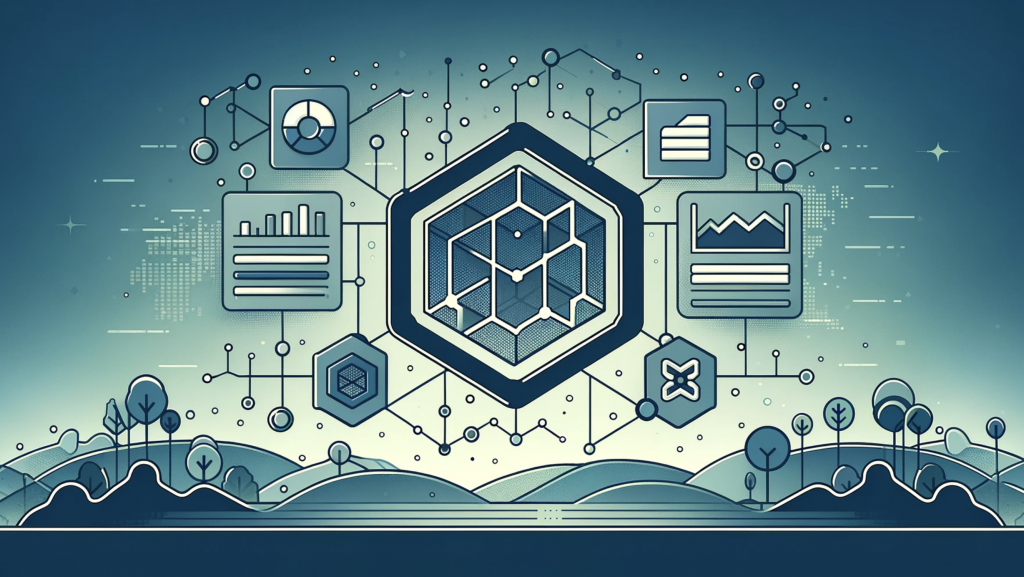
The use cases above are only a few prominent examples, and you can build a lot more with Moralis’ Solana API!
Summary: Exploring the Solana Ecosystem – List of the Best Projects on Solana
In today’s article, we kicked things off by exploring the Solana ecosystem. In doing so, we learned that Solana is a layer-1 blockchain that supports both smart contract and dapp development, which has laid the foundation for a vast ecosystem of DeFi platforms, Web3 games, and other projects!
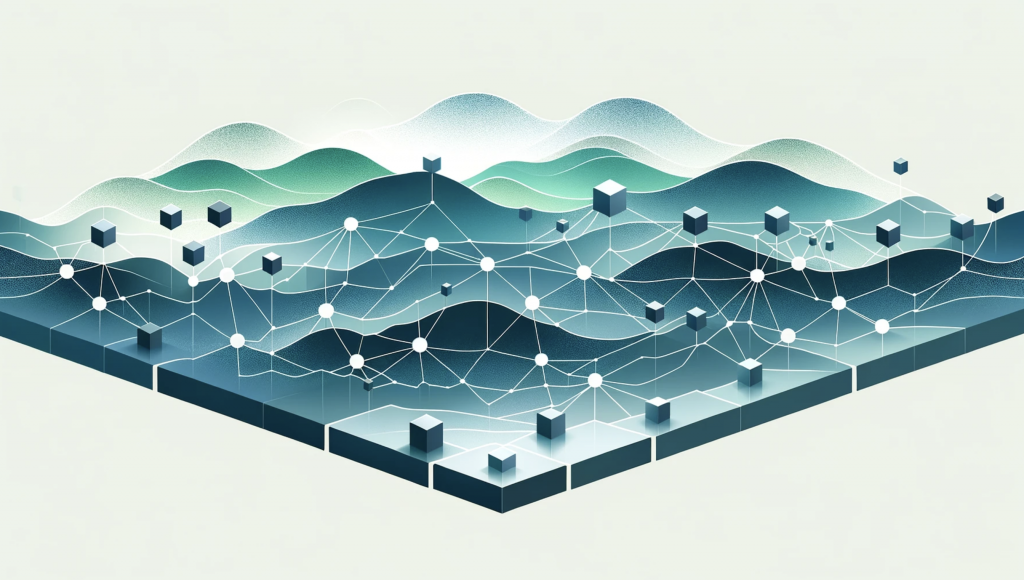
Next, we briefly discussed some benefits of the Solana ecosystem, where we discovered that the blockchain offers fast transaction speeds and great opportunities for projects to scale. This makes the Solana blockchain suitable for platforms relying on high throughput, such as DeFi projects.
From there, we then jumped into a list of the best Solana projects, where we covered the following ten platforms:
- Solend
- Marinade Finance
- Raydium
- Saber
- Orca
- Magic Eden
- Phantom
- Solflare
- Star Atlas
- StepN
Lastly, to top things off, we explored Moralis – the industry’s leading Web3 API provider for Solana development. In doing so, we dove a bit deeper into the NFT API, Token API, and Balance API.
If you liked this Solana ecosystem article, you might want to check out some similar content here on the blog. For instance, read our Polygon ecosystem guide or explore the Ethereum ecosystem in 2024. You can also get the answers to questions like “Why did crypto go up today?” and “Why did crypto crash today?”. You’d be happy to know that these questions can be answered thanks to Moralis’ Why Did It Move API! In addition, if you want to take your Solana projects to the next level, sign up with Moralis right now. You can create an account for free, and you’ll gain instant access to all our Web3 development tools!
Read More: moralis.io

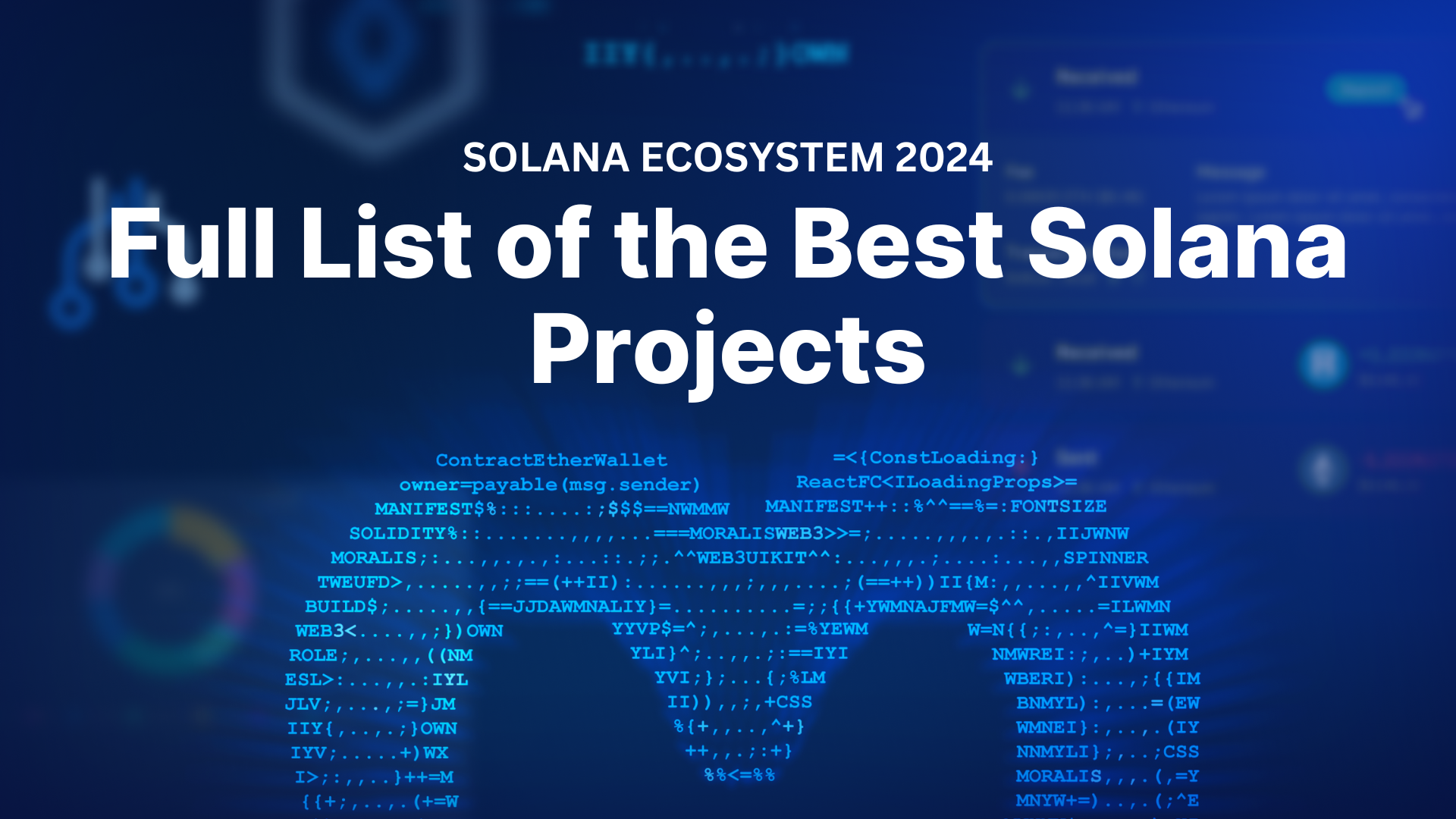


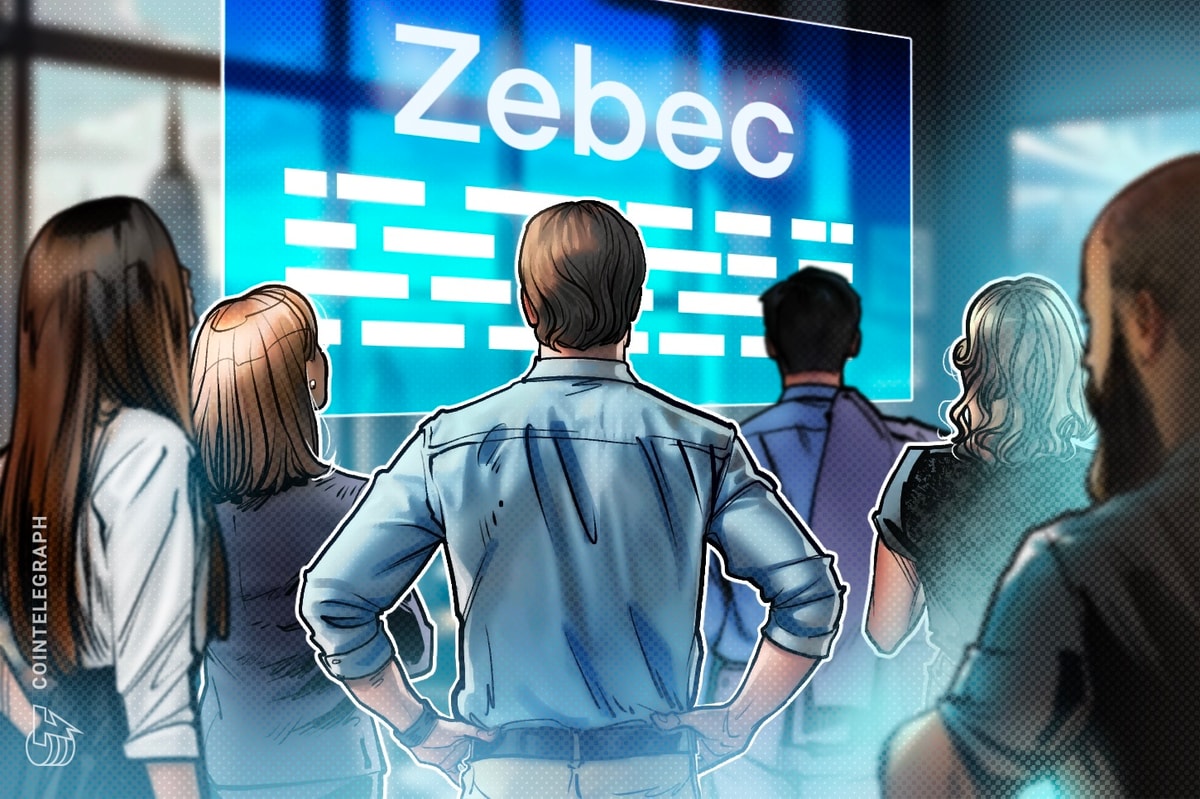
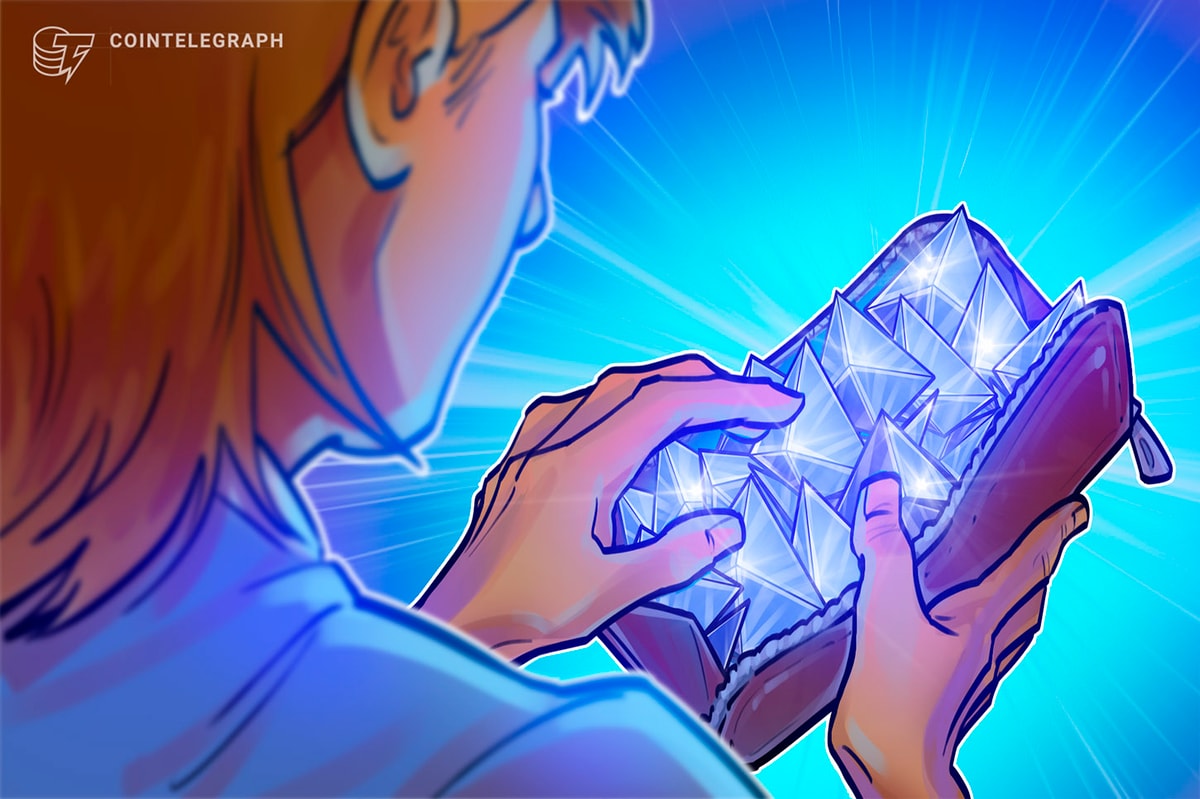



 Bitcoin
Bitcoin  Ethereum
Ethereum  Tether
Tether  XRP
XRP  Solana
Solana  USDC
USDC  Dogecoin
Dogecoin  TRON
TRON  Cardano
Cardano  Lido Staked Ether
Lido Staked Ether  Wrapped Bitcoin
Wrapped Bitcoin  Hyperliquid
Hyperliquid  Wrapped stETH
Wrapped stETH  Sui
Sui  Chainlink
Chainlink  LEO Token
LEO Token  Avalanche
Avalanche  Stellar
Stellar  Bitcoin Cash
Bitcoin Cash  Toncoin
Toncoin  Shiba Inu
Shiba Inu  USDS
USDS  Hedera
Hedera  WETH
WETH  Wrapped eETH
Wrapped eETH  Litecoin
Litecoin  Polkadot
Polkadot  Binance Bridged USDT (BNB Smart Chain)
Binance Bridged USDT (BNB Smart Chain)  Monero
Monero  Ethena USDe
Ethena USDe  Bitget Token
Bitget Token  Pepe
Pepe  Pi Network
Pi Network  Coinbase Wrapped BTC
Coinbase Wrapped BTC  WhiteBIT Coin
WhiteBIT Coin  Aave
Aave  Uniswap
Uniswap  Dai
Dai  Ethena Staked USDe
Ethena Staked USDe  Bittensor
Bittensor  OKB
OKB  Aptos
Aptos  Cronos
Cronos  NEAR Protocol
NEAR Protocol  BlackRock USD Institutional Digital Liquidity Fund
BlackRock USD Institutional Digital Liquidity Fund  Jito Staked SOL
Jito Staked SOL  Internet Computer
Internet Computer  sUSDS
sUSDS  Ethereum Classic
Ethereum Classic